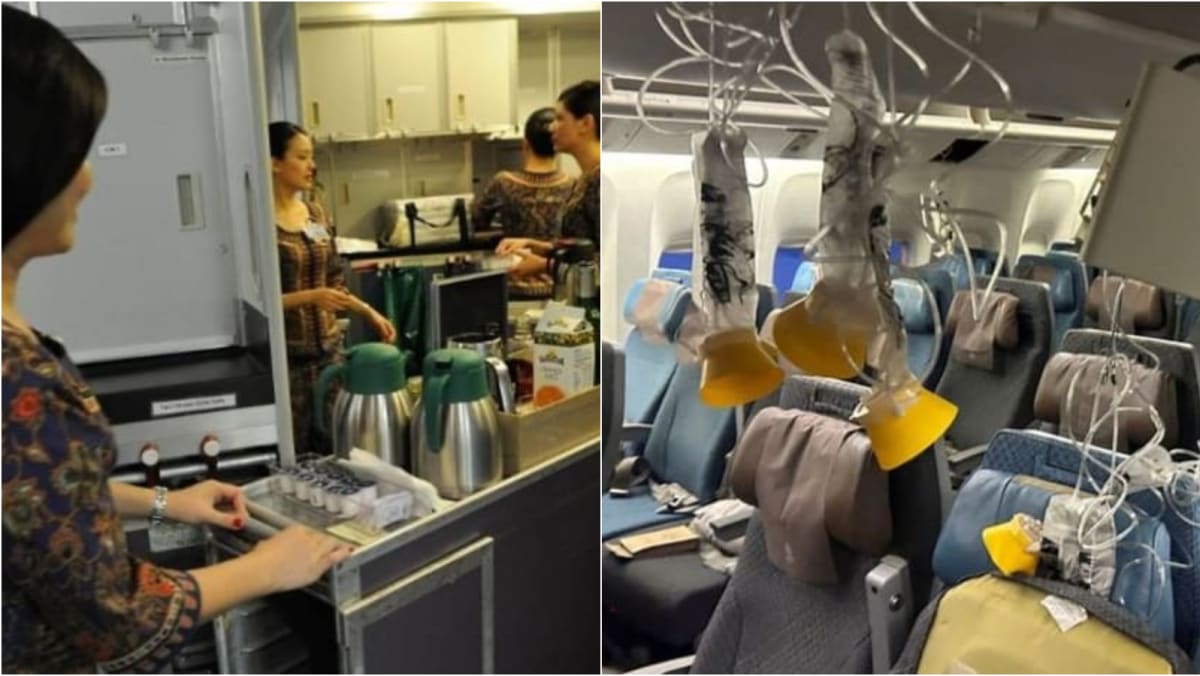What about the kids?
Children under the age of three should be held by their parents and have their infant seat belts fastened.
“Infants are belted to the adult because they are not big or strong enough to be placed and belted on a separate seat,” said former airline executive Chow Kok Wah.
The infant seat belt prevents the infant from separating from their parent.
During turbulence, parents are advised to hold on to their infants. If the child is in a bassinet, they should be removed and placed on the adult’s lap with an infant seat belt on, said Mr Chow, who has more than 30 years of experience in aerospace.
Clear air turbulence, which experts have posited was what struck flight SQ321, is actually quite frequent, a former SIA flight attendant, who declined to be named, told CNA. It is one reason why passengers are advised to keep their seat belts fastened even though the sign may be off.
But this advice sometimes goes unheeded.
“They see us walking around still, so they think it’s all fine,” the 32-year-old said.
“We also explain to parents especially that when they put their babies in the bassinets, the baby inside needs to lie down with the zipper fastened; if not, it could just fly up and hit the ceiling (during turbulence).”
As for that much-coveted row of empty seats next to you? Lying down across them is not advisable either because you can’t be securely belted up in that angle, said the former flight attendant.
What if I’m not seated?
If the plane encounters turbulence while passengers are moving about in the cabin or on their way to the toilet, Mr Daniel advises them to maintain a low profile, most likely by crouching.
“First thing is to try to crouch low and hold on to an armrest or cabin or headrest, anything that you can hold on to,” he said, adding that passengers should avoid grabbing onto a service cart.
Prof Merkert advises passengers not to go to the toilet when turbulence is likely, such as when the plane is over oceans.
“If passengers are heading to the toilet and turbulence commences, they should return to their seats immediately,” he said.
Mr Chow said the safety risk here is if passengers are queuing at the toilet. If possible, passengers should control their liquid intake to minimise visits to the restroom on the plane.
Cabin crew should even go as far as to proactively guide passengers who are queueing for the toilets to return to their seats, said Mr Abbas Ismail, course chair for the Diploma in Aviation Management (AMS) at Temasek Polytechnic.
He added that cabin crew who are on the move should also find a seat as quickly as possible when turbulence escalates.
“If the crew are not able to get to the nearest crew seat in time, find the nearest available passenger seat and fasten the seat belt,” he said.

